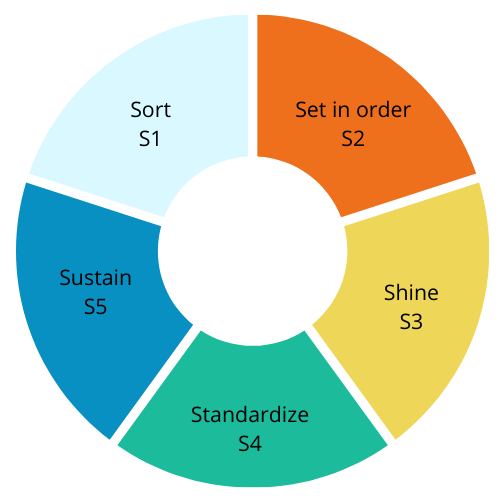The 5S method, a step towards optimizing cargo space
_1.png)
The Japanese approach to work has resulted in many methods and techniques of enterprise management. One of them is the 5S method, based on five steps: SEIRI (sort), SEITON (set in order), SEISO (shine), SEIKETSU (standardize) and SHITSUKE (sustain). The benefits of its use in the workplace include improving the quality and efficiency of tasks performed, reducing costs and increasing safety.
The first stage is the selection of items that are necessary for work, and then throwing away unnecessary items at a given workstation. The next step is systematics, which involves determining the appropriate place for storing individual materials, e.g. office supplies. The next stage is cleaning the workstation and devices used by a given employee. Then, the standardization of the above procedures is implemented, setting schedules for device maintenance and maintaining cleanliness. The last stage is self-discipline, necessary to consolidate all developed behaviors and principles prevailing in the company.

Source: Own. Graph showing the 5S Method
Benefits of introducing the 5S Method
Each of the individual stages of the 5S Method brings tangible benefits. However, the standards developed must be observed and systematically developed. One of the main benefits is increased work efficiency, reduced operating costs and increased profits of a given company. There is also an increase in the quality of work performed and employee satisfaction. For example, the selection stage allows employees to maximally concentrate on the tasks performed and not to get distracted. In turn, thanks to systematization, each employee knows exactly where to look for the thing they need for work and does not waste time searching. In addition, cleanliness and general care for your work station have a positive effect on the tasks performed and can prevent, among other things, equipment downtime. There are many more benefits that can be observed after implementing the method in the company. The 5S method affects the reduction of downtime at work, a reduction in the number of accidents and a reduction in the amount of waste. In addition, companies note an improvement in the quality of offered products and services, extension of the life of devices, optimal use of space and improvement of communication between employees.
The 5S method, or a step towards optimizing cargo space
The Japanese management method can also be used in planning cargo loading. For example, the stages of selection, systematization and organization will be useful in almost every office to get rid of unnecessary transport documentation and make room for new materials needed for work. It is also worth paying attention to storing digital data, appropriate sorting and deleting outdated files. Such actions will certainly make it easier to move around the office and computer space. In addition, it is worth deciding to standardize digital tools that facilitate work, e.g. the TMS system or a loading planner. Standardization of loading planning procedures, programs used and document storage is extremely important. Self-discipline is also equally important to maintain previously developed work results. The 5S method during loading planning can bring benefits, i.e. increased efficiency of loading planning, optimization of cargo space, and consequently also reduction of transport costs. If you are looking for a program that would help you plan cargo loading - try Smartload. We offer a 14-day free trial period!
Read also: Benefits of Lean Management